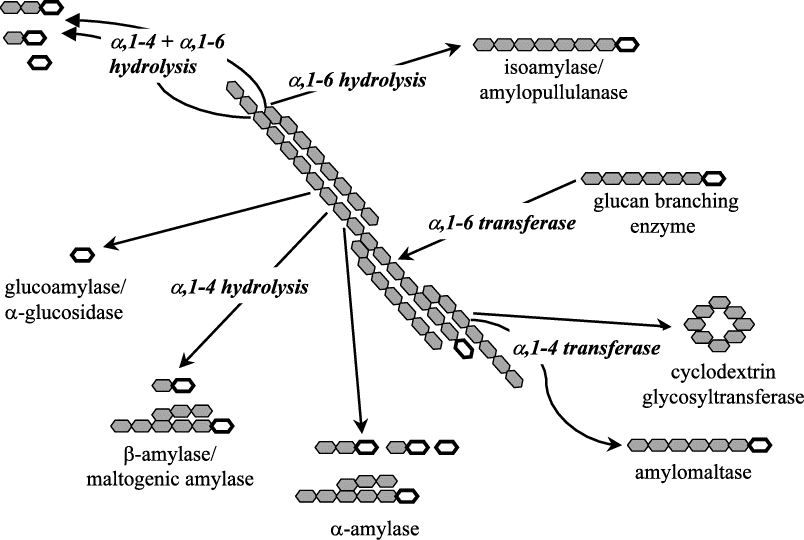
What are Starch-Degrading Enzymes in Baking?
Starch-degrading enzymes can also be classified based on their action pattern as exo-acting, endo-acting, or debranching. Exo-acting, or saccharifying, amylases degrade amylose and amylopectin by successive removal of sugar units from the nonreducing chain ends. Endoacting, or liquefying, amylases degrade amylose and amylopectin by randomly cleaving alpha-1,4 linkages throughout the chains. Debranching enzymes degrade amylopectin by cleaving the alpha-1,6 linkages at the branch points. Beta-amylases and glucoamylases remove maltose and glucose units, respectively, from starch so are classified as exo-amylases. Alpha-amylases generally degrade starch into dextrins so most are classified as endo-amylases. Pullulanases and isoamylases are classified as debranching
enzymes.

Source: ResearchGate.com
Yet another way of classifying enzymes is by thermostability, or the temperature and conditions at which they are inactivated. Enzymes with the same action pattern can differ greatly in thermostability depending on their source. For baking applications, the critical temperature range is from about 150° to 175°F (65° to 80°C), where starch is gelatinized and subject to hydrolysis.
Starch degrading enzymes that are inactivated quickly at 140°F (60°C) can be classified as low thermostability, those that remain active above 175°F (80°C) can be classified as high thermostability, and those in-between can be classified as intermediate thermostability. When comparing the effect of various amylolytic enzymes on crumb softness and crumb resilience (see table), it becomes apparent that action pattern and thermostability are the most important characteristics. The maltogenic amylase from Bacillus stearothermophilus outperforms the other amylases as a crumb softening agent giving a superior crumb softening effect without causing gumminess or a lack of crumb resilience. This enzyme also has the most desirable combination of exo-action pattern and intermediate thermostability.
Reference:
https://lallemandbaking.com/wp-content/uploads/2018/04/3_10SOFTNESS.pdf





